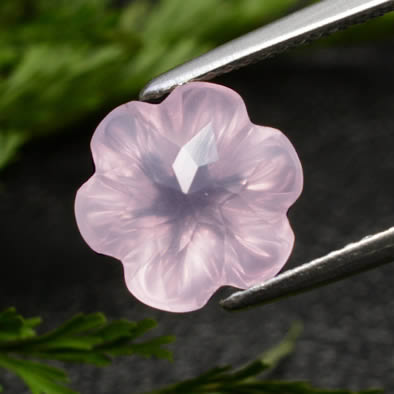The Charm of Pink Rose Quartz

Introduction to Rose Quartz
Rose quartz belongs to the macrocrystalline quartz family, which includes gems such as rock crystal, amethyst, citrine, and smoky quartz. The "macrocrystalline" label means these stones have large crystals that you can see without a microscope. This type of quartz is usually transparent to translucent, with a glassy luster. What makes rose quartz unique? Its soft, translucent milky pink color sets it apart from the others.
Physical Properties
Rose quartz comes in various pink hues, ranging from light pastels to richer rose reds. Scientists believe trace elements like titanium, iron, or manganese are responsible for that signature color, but the precise mechanism isn't fully clear yet. The pink often appears milky, cloudy, or hazy, which deepens the shade and creates a gentle glow reminiscent of adularescence.
Asterism and Star Effects
You might notice that some rose quartz contains tiny rutile needles within it. These can produce a star-like effect called asterism. To see it, shine a light through the stone or from above - it can bring out an intriguing star pattern. Star rose quartz is typically cut into cabochons to emphasize this chatoyancy, really making the effect stand out. It's fascinating how nature creates these optical phenomena, isn't it?

Uses and Applications
Rose quartz functions as both an ornamental stone and a gemstone. It serves as an alternative birthstone for January. High-quality specimens with strong color are often shaped into cabochons, while clearer ones may be faceted. In addition to jewelry, it's commonly used for carvings, including spheres, figurines, and intricate statues - transforming the raw material into beautiful artwork.

Sources Around the World
This gem is found in regions such as Madagascar, India, Germany, South Africa, and several areas in the USA. A well-known deposit near Custer, South Dakota, once produced significant quantities. Nowadays, Brazil provides much of the premium rose quartz available.
History and Lore
Rose quartz has a rich background in folklore. Due to its soft hue, it has long been considered a soothing stone that promotes love and emotional healing. It's believed to clear away negative emotions like jealousy, anger, and fear, while easing heartbreak and trauma. Some people place it under their pillow to encourage peaceful sleep and creative inspiration. Wearing it in rings is thought to offer certain health advantages.
Disclaimer: The healing and spiritual properties described here stem from traditional beliefs and folklore. They lack scientific backing and should not replace professional medical advice. Always consult a healthcare expert for any health concerns.
Frequently Asked Questions
What is rose quartz?
Rose quartz is a type of macrocrystalline quartz known for its pink color and translucent appearance, part of the same family as amethyst and citrine.
What causes the pink color in rose quartz?
The color likely comes from trace amounts of elements like titanium, iron, or manganese, though the full chemistry isn't completely understood yet.
Where is rose quartz found?
It's sourced from locations including Madagascar, India, Germany, South Africa, the USA, and primarily Brazil for high-quality material.
What is star rose quartz?
Star rose quartz contains rutile needles that create an asterism effect, visible as a star pattern under light, often cut into cabochons.
Is rose quartz used in jewelry?
Yes, it's cut into cabochons or faceted gems for jewelry, and also carved into ornamental items like statues and spheres.

